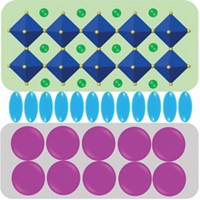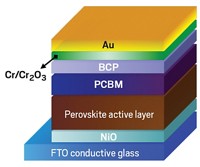Advertisement
Grab your lab coat. Let's get started
Welcome!
Welcome!
Create an account below to get 6 C&EN articles per month, receive newsletters and more - all free.
It seems this is your first time logging in online. Please enter the following information to continue.
As an ACS member you automatically get access to this site. All we need is few more details to create your reading experience.
Not you? Sign in with a different account.
Not you? Sign in with a different account.
ERROR 1
ERROR 1
ERROR 2
ERROR 2
ERROR 2
ERROR 2
ERROR 2
Password and Confirm password must match.
If you have an ACS member number, please enter it here so we can link this account to your membership. (optional)
ERROR 2
ACS values your privacy. By submitting your information, you are gaining access to C&EN and subscribing to our weekly newsletter. We use the information you provide to make your reading experience better, and we will never sell your data to third party members.
Energy
Improving Polymer Tandem Solar Cells
by Mitch Jacoby
July 25, 2011
| A version of this story appeared in
Volume 89, Issue 30
Blending gold nanoparticles into the layer connecting the two subcells of a polymer tandem solar cell boosts the device’s performance, according to researches at UCLA, the Chinese Academy of Sciences, and Japan’s Yamagata University (ACS Nano, DOI: 10.1021/nn202144b). Organic photovoltaic (OPV) cells offer the promise of low-cost power production and flexibility in applications (literally), but the efficiency with which OPV devices convert light to electricity has remained low, at about 7–8% (C&EN, Aug. 23, 2010, page 12). Conversion efficiency improvements of less than 1% make headlines in this field. One strategy to boost that value calls for stacking two light-absorbing materials in a tandem cell to harvest a greater fraction of the solar spectrum. By inserting a nanoparticle layer between two subcells, UCLA’s Yang Yang and coworkers coupled the tandem cell strategy with the plasmonic effect—a process that concentrates light via scattering from nanoparticles. One subcell was made from a conducting polymer/fullerene-derivative blend known as P3HT:ICBA. The other included a diazole polymer/fullerene-derivative combination designated PSBTBT:PC70BM. The conversion efficiency of either cell alone was less than 3.5%. The value for the metal-free tandem cell rose to 5.2%. Adding the nanoparticle layer further raised the efficiency to 6.2%.




Join the conversation
Contact the reporter
Submit a Letter to the Editor for publication
Engage with us on Twitter